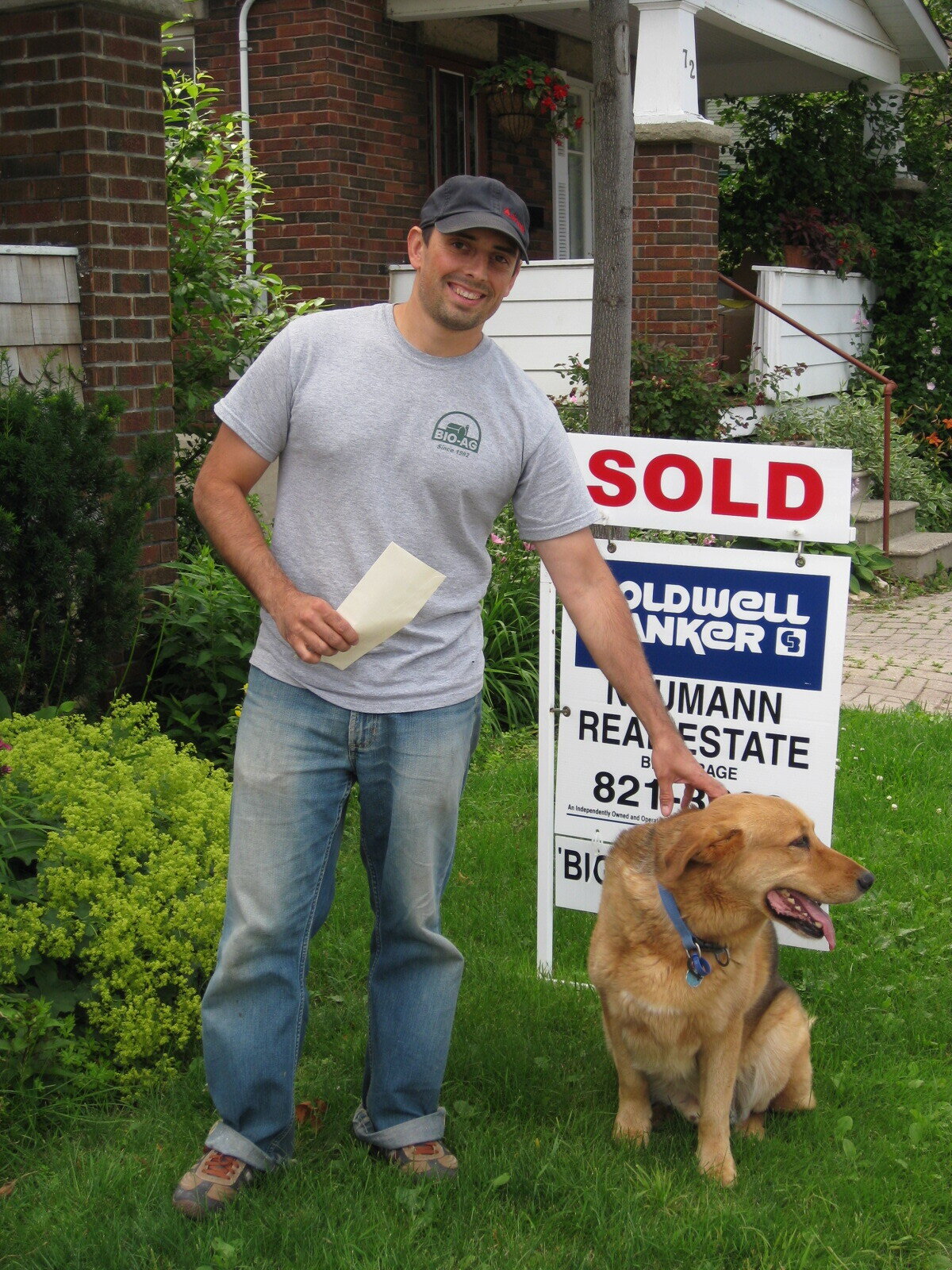Sweet silence (Photo: person sitting on a dock looking at the mountains)
You want peace, quiet, and relaxation at the cottage.
You don’t want to worry about your dog lunging at every person and dog who walks by your property (so embarrassing!)
You don’t want a dog who growls at every person who pops by to visit you.
You don’t want your dog mouthing and nipping the neighbours or your own guests.
So, how do we get a peaceful cottage dog? A dog who lounges on the dock beside you, rather than barking at every passing boat?
Last week, we covered five tips to help you, your family, your dog, and your guests to calmly coexist in harmony at the cottage. This week, we have five more tips to help you enjoy your time away with your dog.
Check out last week’s blog post for five more tips to help you get a calm cottage dog (Photo: orange lifeguard tower with the number five on it)
Number six:
Structured downtime. Your dog needs downtime. Dogs often make their worst mistakes (snapping at children, jumping up on strangers) when they are overtired. Use crate and place to give your dog the opportunity to rest. Advocate for their space, especially if there are lots of young children around.
Provide a safe space for your dog or puppy to rest away from the hustle and bustle to keep her safe (Photo: Bulldog puppy napping in a crate,)
Number seven:
Use place and crate when you’re cooking and eating meals to prevent your dog from learning how to be a counter surfer or beggar. Dogs are smart, opportunistic, and learn through repetition. What you practice and allow out here at the cottage, will follow you home (and vice versa.)
Number eight:
Ditch that tie out. You know, that leash that screws into the ground. That’s the one. It’s outta here.
When your dog is tied out without supervision, he learns things, bad things. Things that work against your goals.
He learns:
When I bark and lunge at people, dogs, etc, they move away from me.
This behaviour is referred to as “mailperson syndrome” because when delivery people come to your home and your dog barks, your dog is rewarded by the person going away. The person was going to leave anyway, but your dog doesn’t know that. Your dog thinks that he successfully guarded your home and you. If he practices this every day, there is often a ripple effect, where he tries the same behaviour with your visitors (only it doesn’t work because you’ve invited them into your house.) This can cause a lot of stress for your dog, especially if the person reaches toward the dog before the dog is ready to be touched. Sometimes, the dog even escalates their lunging and growling behaviour to a bite because their usual game plan (bark and the person goes away) isn’t working.
At the cottage, when your dog is tied up outside, he’s learning that when he barks and lunges, people keep right on trucking past the property. He has no idea that they were only out for a stroll and had no intention of coming onto your property. He gains this fake confidence that he’s in charge of the property.
What to do instead:
Supervise your dog. If you can’t (because you’re in the shower or out waterskiing,) use the crate so your dog will just chill while you’re out without him. Be sure to fulfill his needs before crate time.
Your dog is always learning. What is he learning in this moment? (Photo: brindle dog behind a chain link fence)
Number nine:
Teach. Your dog is always learning. If your dog has never been to your cottage before, he needs to learn the rules, boundaries, and limits. He may need to learn how to ride in a boat, how to walk on your new wobbly dock, or how to wear a life jacket (not chew it off.)
It is our job as humans to teach our dogs right from wrong in the human world. They won’t just “figure it out.” If I put you on a rocket ship right now would you just figure out how to be an astronaut? Nope. You would need an astronaut to hold your hand and teach you how to survive in outer space. Your dog needs you to teach him right from wrong. This will protect him and keep him safe while at the cottage.
When you take the time to teach your dog what behaviours you like and want to see more of, you’ll find your relationship will be immediately improved.
Number ten:
Consistency. All family members who will be living with your dog at the cottage need to be consistent with the rules and boundaries. Mouthing, biting, jumping up, begging, counter surfing, leash pulling, door dashing, biting/scratching/mouthing swimmers, etc are all nos. Have those tough conversations — your dog’s life depends on you.
Wishing you a safe and fun trip to Cottage Country!
Alyssa
Photos: Kalen Emsley @kalenemsley (person sitting on a dock looking at the mountains,) Isai Ramos
@isai21 (orange lifeguard tower with the number five on it,) Alyssa Foulkes (Bulldog puppy napping in a crate,) Upsplash Images (brindle dog behind a chain link fence,)



























































